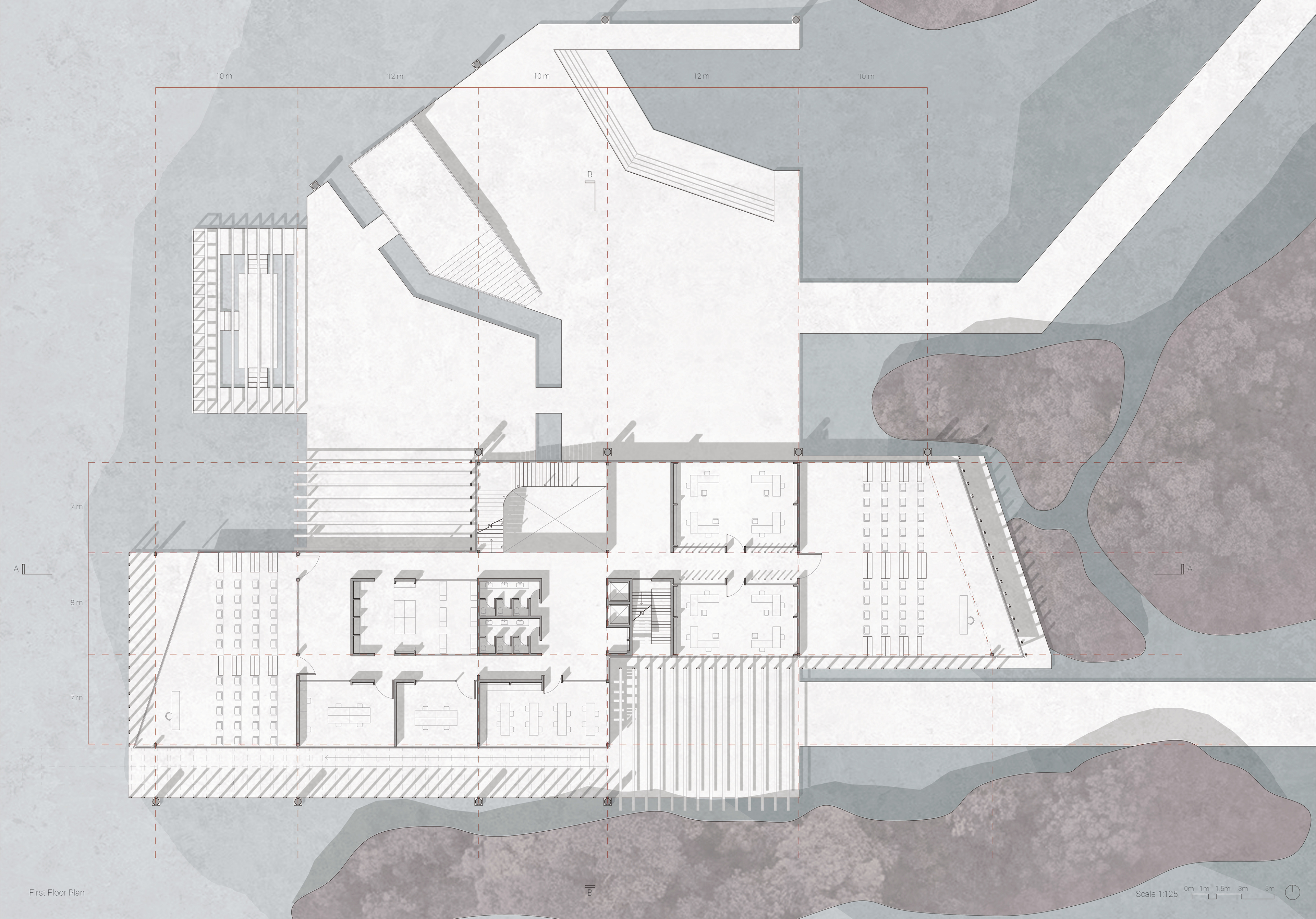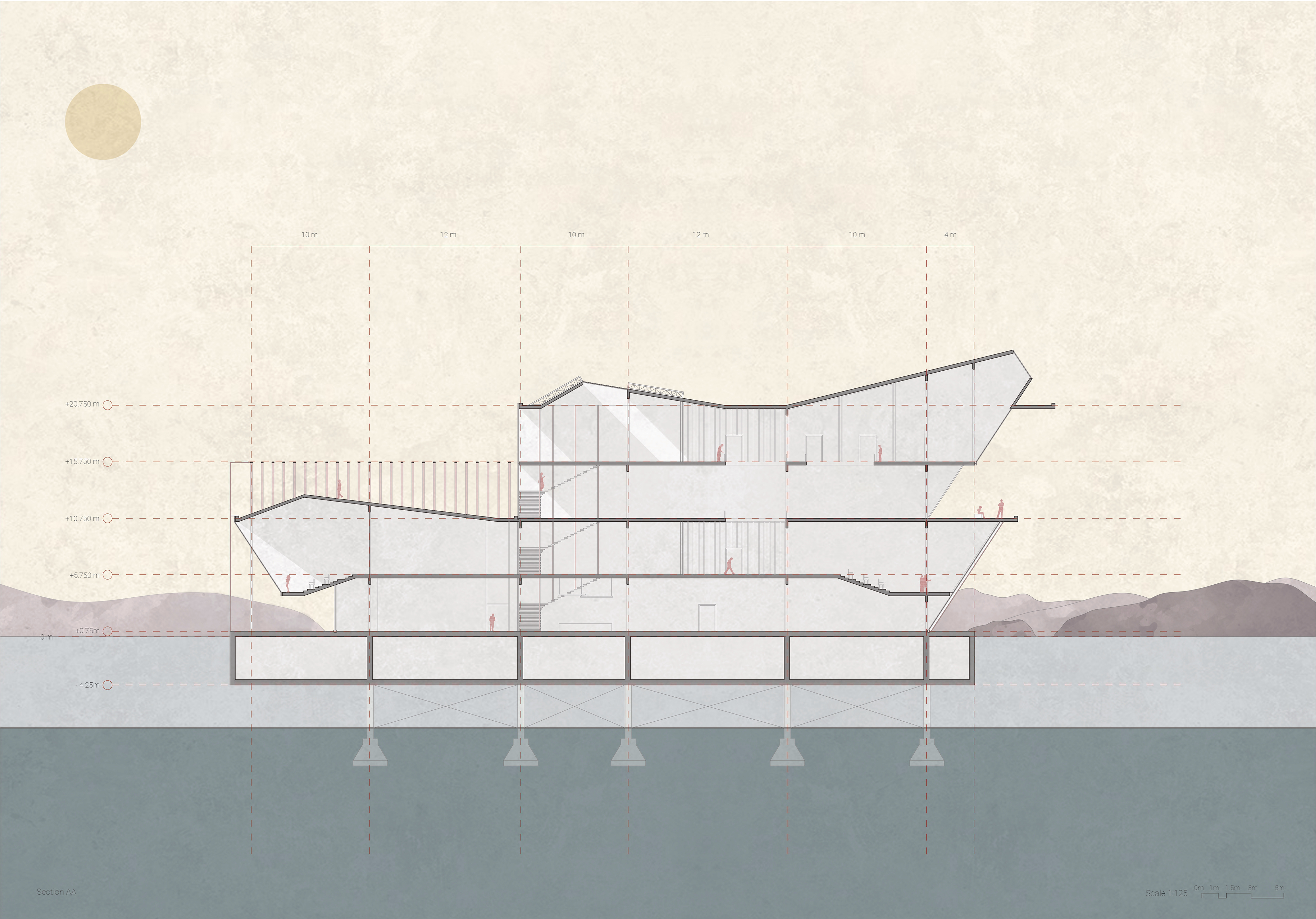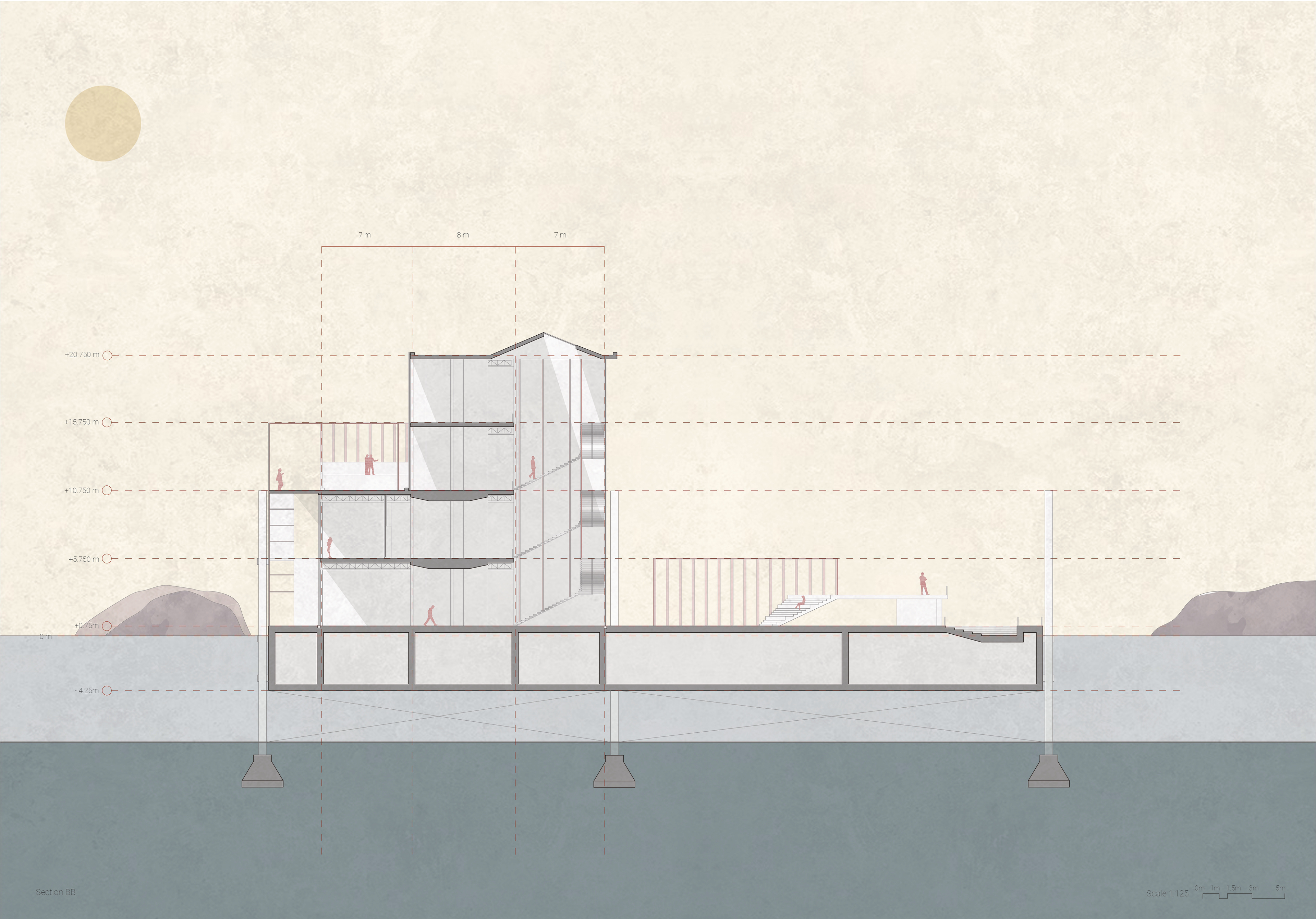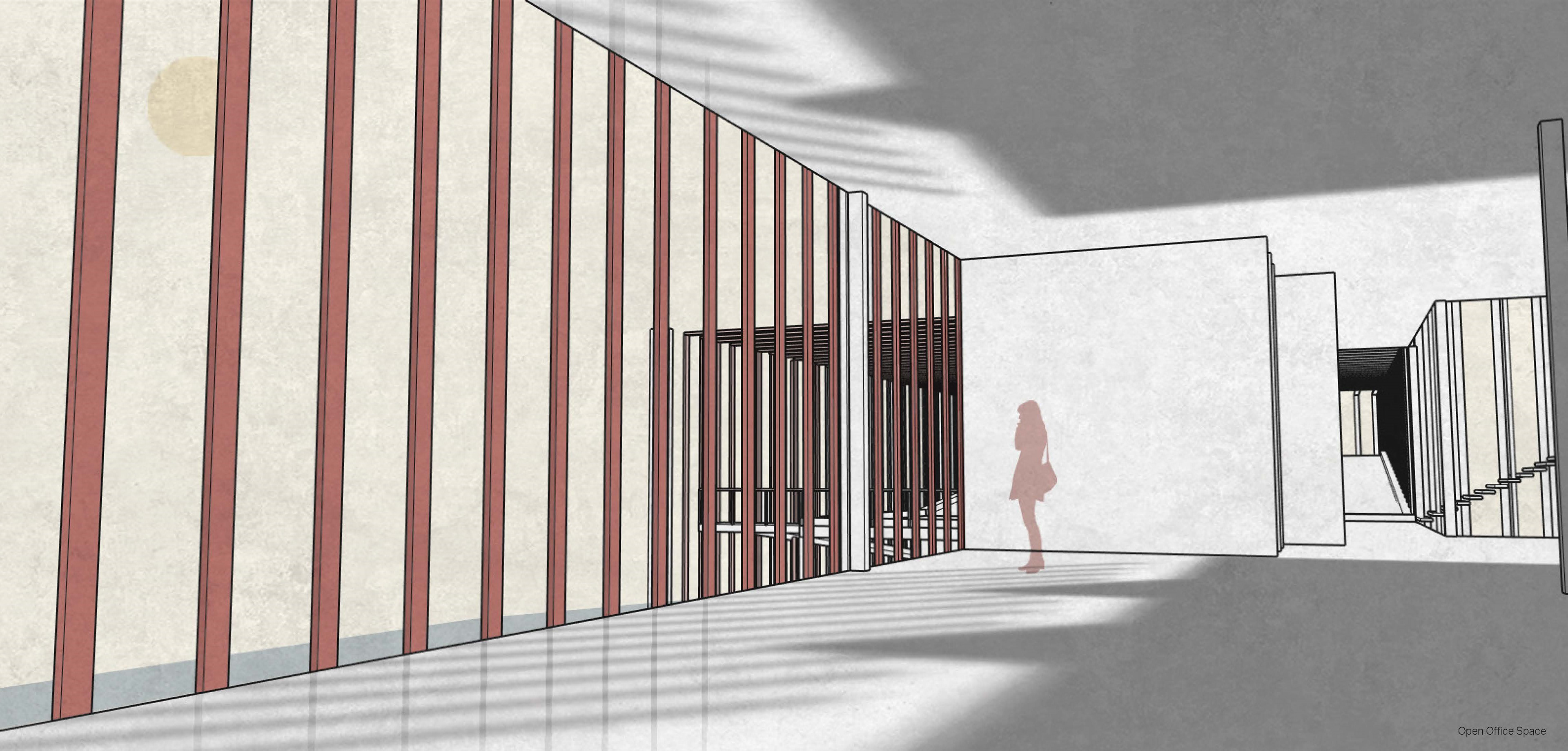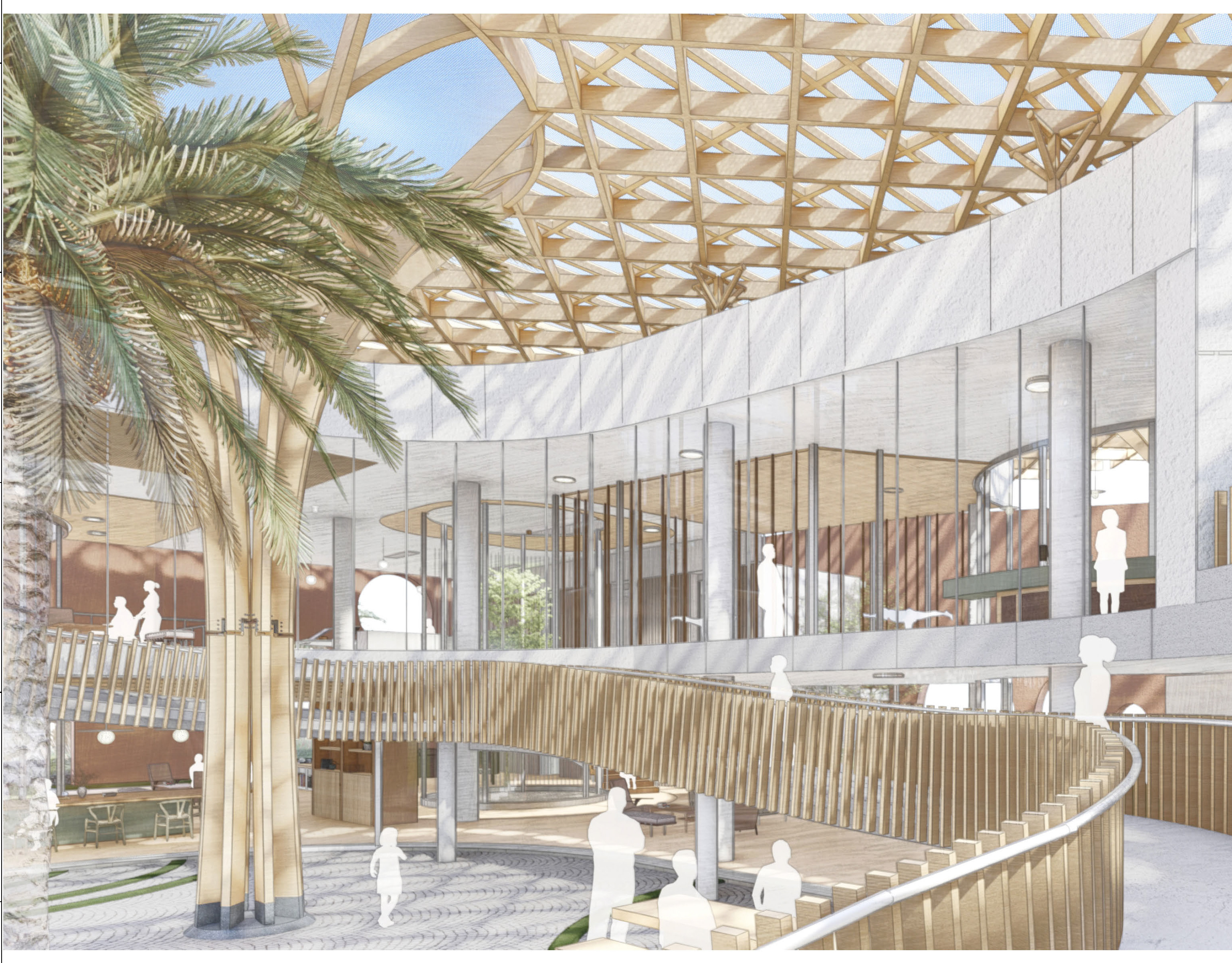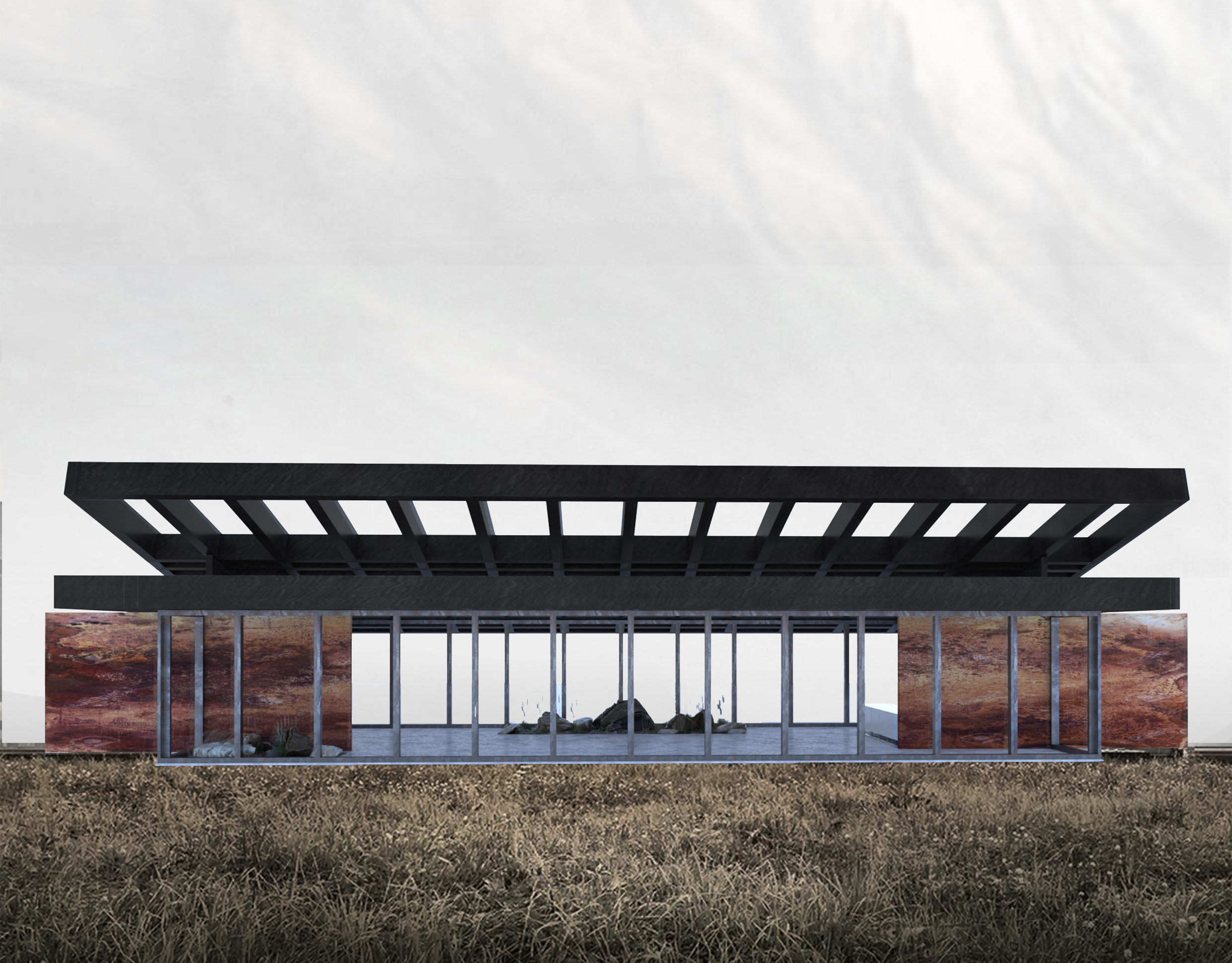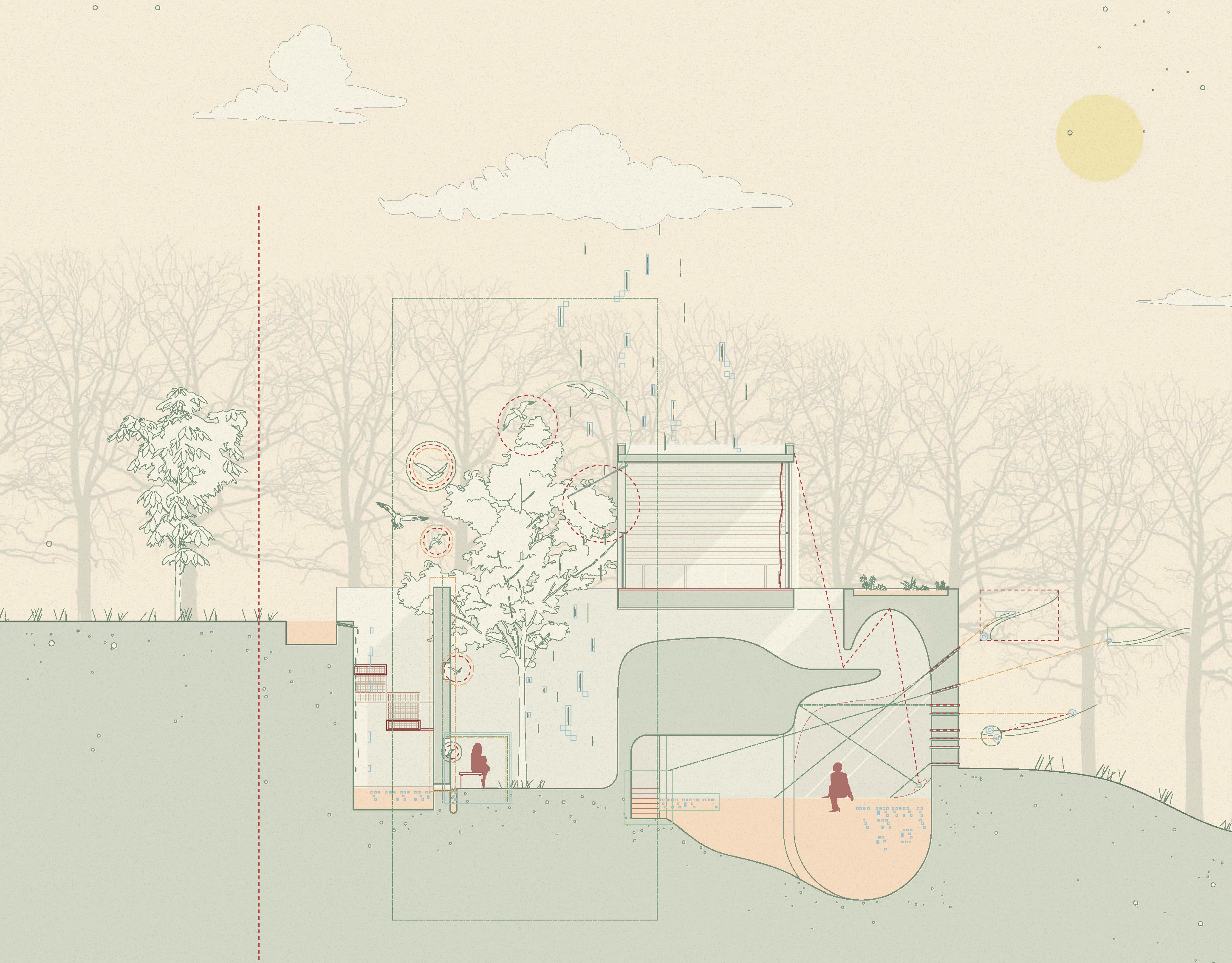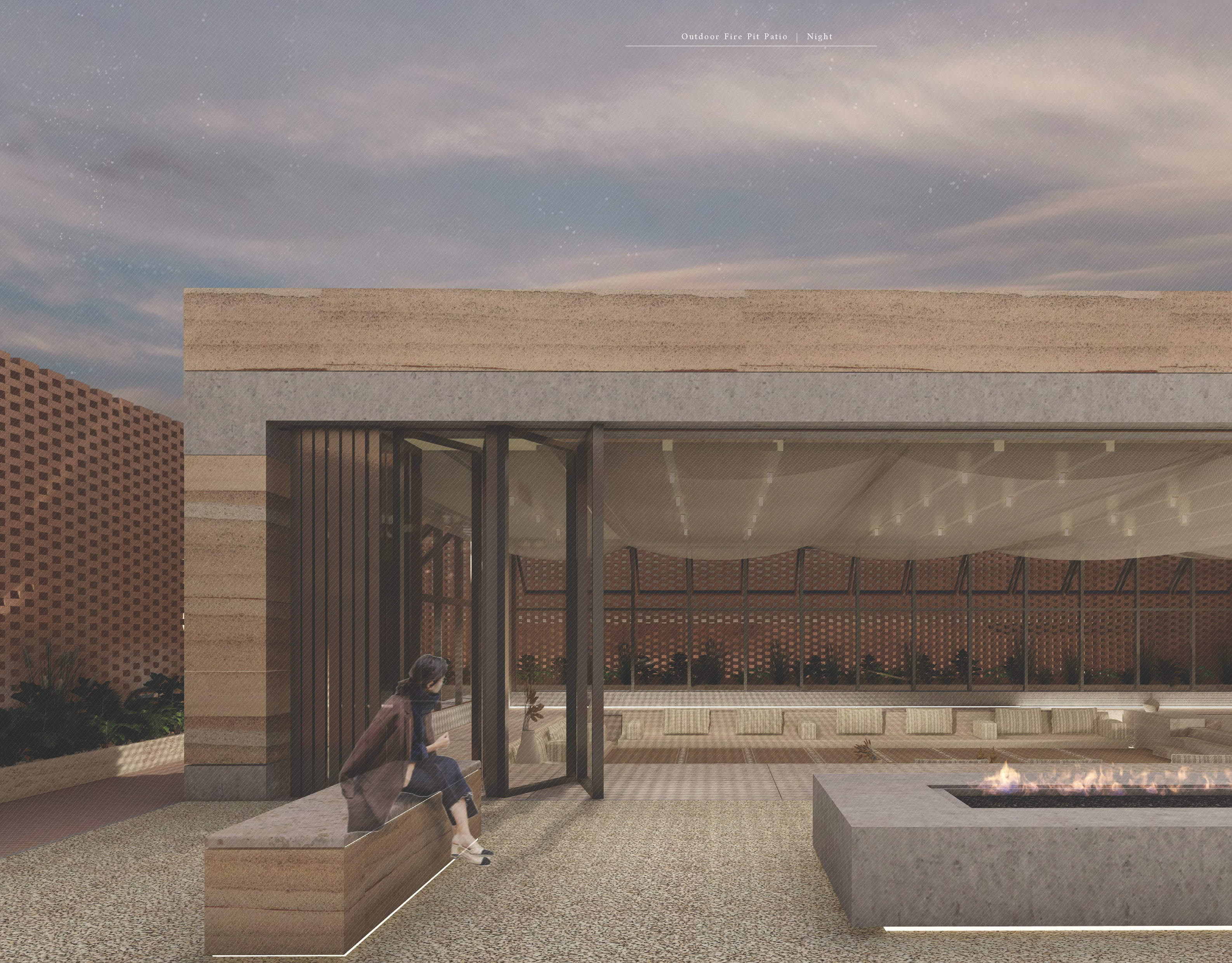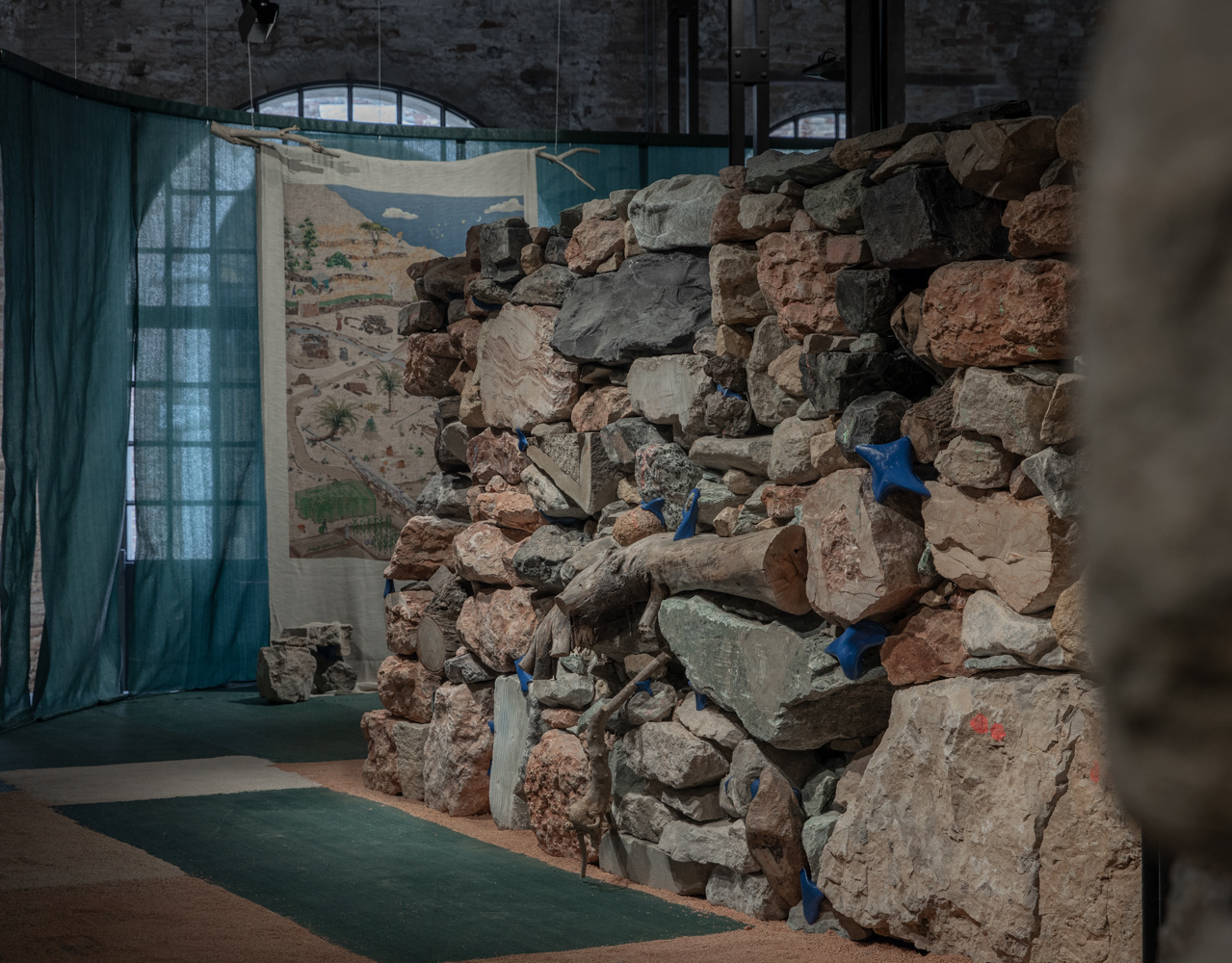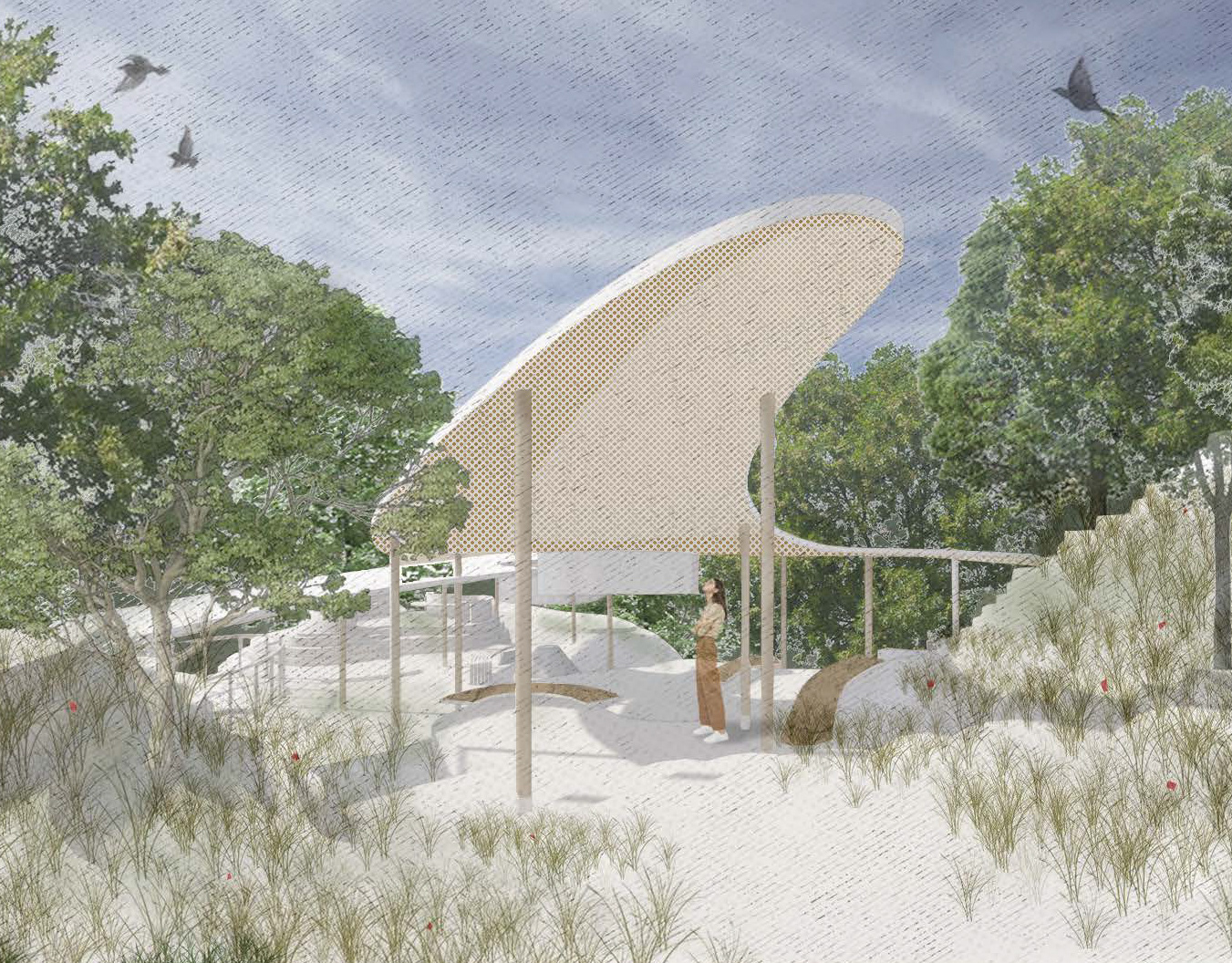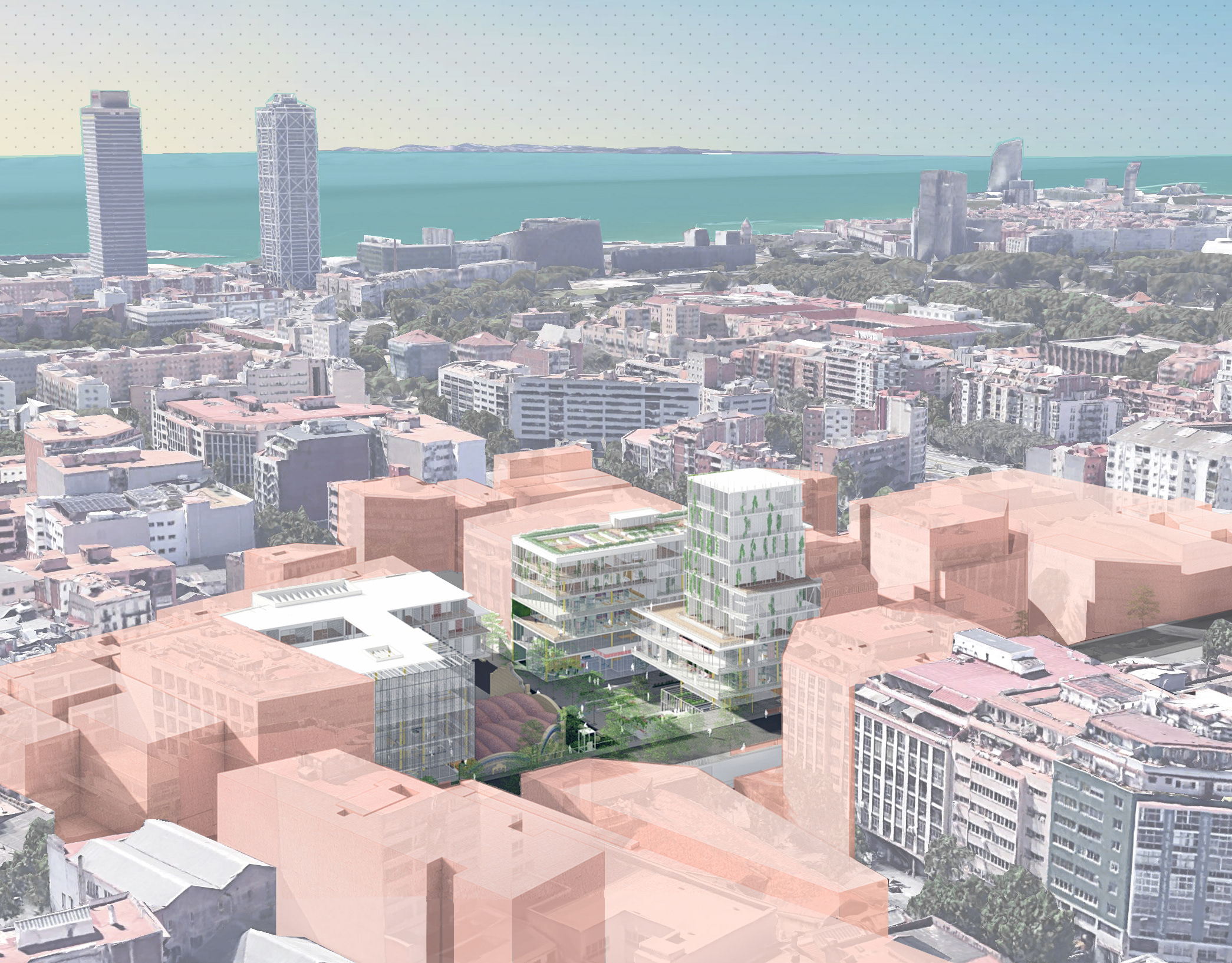Research done on future climate change effects predicted that water levels may rise 6–9 meters in the next 100 years. This fact will affect many communities living on the edge between land and water. As the given site is a landfill surrounded by a forest of endangered mangroves prone to deconstruction, it was of my first interest to preserve the mangroves and help them thrive.
This proposal intends to highlight the importance of the mangrove forest by gradually sinking the present landfill and allowing the mangroves to grow out to take the full site. This will also provide a barrier against future floods as water levels rise. The Project began with the principle of “building for a flood”. Therefore, every aspect of the site will be solely floating on water, dependent on land only through guide columns to keep the structure in position. This provides a closer interaction between the public and mangroves both spatially and physically. Placed on the edge of the water and mangroves is the floating institute, where it becomes an important element in the landscape that creates a hierarchical and processional route from the south side or the wooded paths through the forest. Moreover, to enhance the connection between the project and the mangroves, a path was created within the mangrove forest leading the visitors to mangrove viewing pods and mangrove nurseries, as a part of the institutes educational program.
